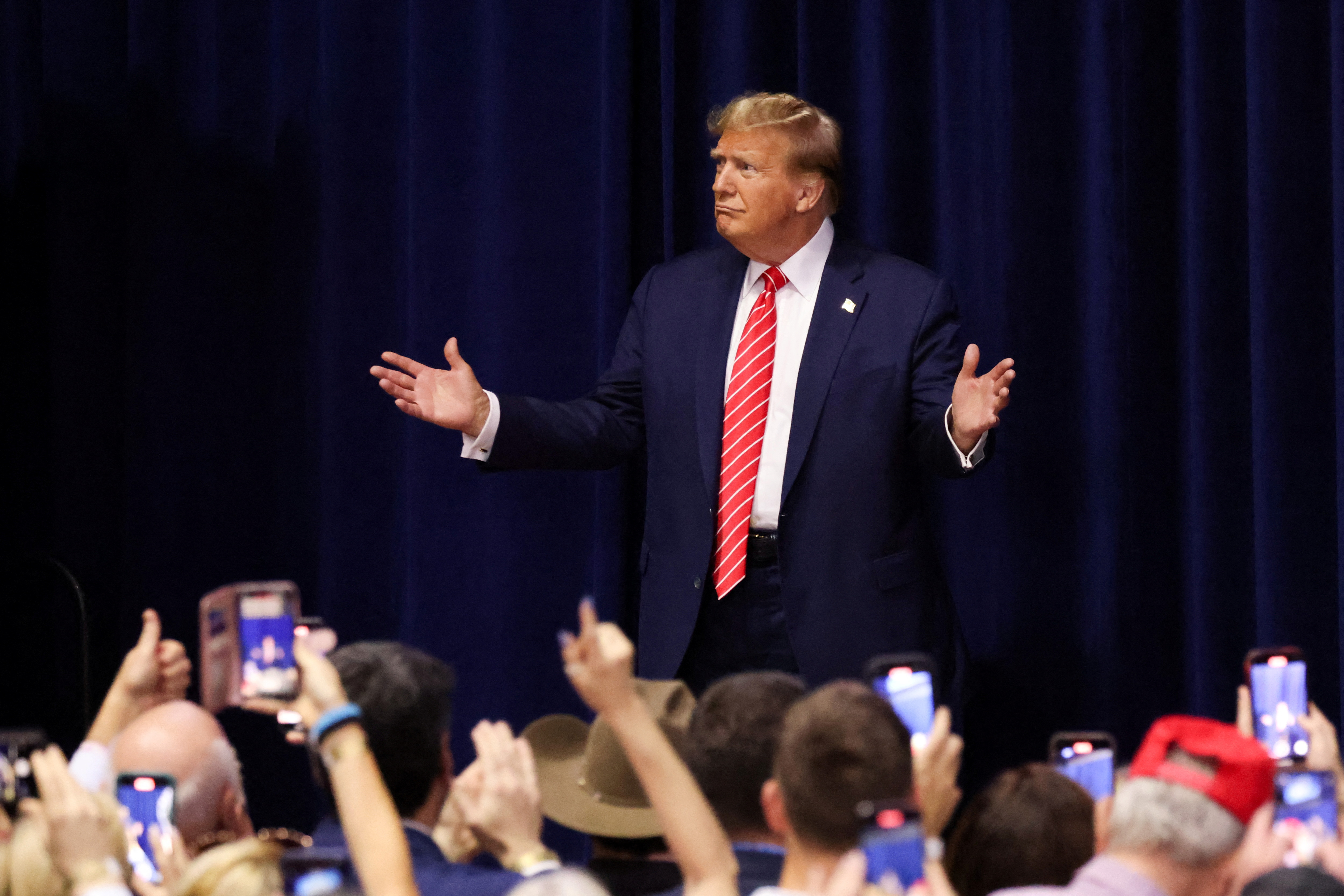Former President Donald Trump’s recent speech in Las Vegas, Nevada, has left political observers and the public alike scratching their heads. The speech, widely regarded as one of his most disjointed and unhinged appearances to date, quickly went viral, with critics seizing on his erratic behavior and baffling statements. What started as a typical Trump rally quickly devolved into a chaotic mix of rambling remarks, repeated phrases, and nonsensical claims that seemed to lack any clear direction or purpose.
Trump’s speech began with a strange critique of Vice President Kamala Harris. In a moment that can only be described as bizarre, he mocked her for supposedly saying “thank you” too many times in a recent speech. Trump exaggerated this into a nonsensical tirade, repeating “thank you” over and over again as if trying to mimic her. The moment quickly became a meme on social media, with users pointing out the irony of Trump, who is often criticized for his repetitive and rambling speeches, making such a claim.
Trump didn’t stop there. His critique of Harris extended beyond her speech style and ventured into more serious accusations. He claimed, without providing any evidence, that Harris had lied 26 times in a single speech the previous night. According to Trump, Harris had misrepresented his tax policies, but in typical Trump fashion, the accusations were more about generating outrage than offering facts. The disconnect between his accusations and reality became a recurring theme throughout the speech, as he continued to make claims that were either misleading or outright false.
In another puzzling moment, Trump claimed that “nobody had ever heard of Kamala Harris before.” This statement seems to disregard Harris’s long career in public service, including her role as a U.S. Senator and her historic election as Vice President. The remark raised questions about Trump’s own awareness of current political figures and his tendency to diminish the achievements of his opponents.
One of the most surreal parts of Trump’s speech came when he directly addressed the Culinary Union, a powerful labor organization in Nevada. In a somewhat desperate plea, Trump asked union members to vote for him. This plea felt reminiscent of his past attempts to court suburban women voters during the 2020 election, where he famously begged for their support by saying, “Suburban women, will you please like me?” Both moments underscored Trump’s reliance on a form of public pleading that many critics find unseemly for a former president.
The speech also touched on Trump’s critique of Harris’s support for a tax on unrealized capital gains—a proposal that would affect individuals with at least $100 million in wealth. Trump tried to frame this as an attack on small businesses, despite the fact that the tax would primarily impact the ultra-wealthy. As he continued, it became clear that his focus on this issue was out of step with the concerns of average Americans. Most people are more worried about rising costs, healthcare, and wages—not how billionaires manage their unrealized investments.
Trump’s inconsistent messaging didn’t stop with economic policy. In a particularly cringe-worthy moment, he praised the business hosting his speech as a “small business,” only to backtrack and acknowledge that it was, in fact, a large business. His remarks seemed to suggest that businesses could manipulate tax classifications to their advantage, a thinly veiled reference to loopholes that benefit the wealthy. The admission felt like a rare moment of candor about how Trump views the tax system: as something to be exploited.
But perhaps the most troubling part of Trump’s speech was his rhetoric around race and immigration. He claimed that President Biden and Vice President Harris were allowing millions of immigrants into the country, which, according to Trump, was taking jobs away from African Americans and Hispanics. This divisive rhetoric echoed the same themes he used during his presidency, where he frequently pitted different racial and ethnic groups against each other to stoke fear and resentment.
Toward the end of his speech, Trump slipped back into familiar territory, warning of an impending economic collapse. He invoked the specter of the 1929 stock market crash, suggesting that if he wasn’t elected, the country would be headed for a similar disaster. However, his fearmongering didn’t quite align with reality. Since Trump left office, the stock market has actually seen significant growth, with major indices like the S&P 500 and the Dow Jones reaching new highs.
Throughout the speech, there were moments that seemed almost too surreal to believe. From bizarre attempts at humor to open appeals for support, Trump’s performance in Las Vegas was a clear example of how his public appearances have become more erratic and unfocused. While he remains a potent figure among his loyal base, the increasingly unhinged nature of his speeches raises questions about his political future and whether he can maintain the broader support needed for another successful presidential run.
In conclusion, Trump’s Las Vegas speech was a chaotic mix of contradictions, exaggerations, and outright falsehoods. While his core supporters may continue to rally behind him, the broader electorate is likely to find his increasingly erratic behavior concerning. As the 2024 election draws nearer, Trump’s ability to connect with voters beyond his base will be critical, and speeches like the one in Las Vegas may do more harm than good for his political ambitions.





